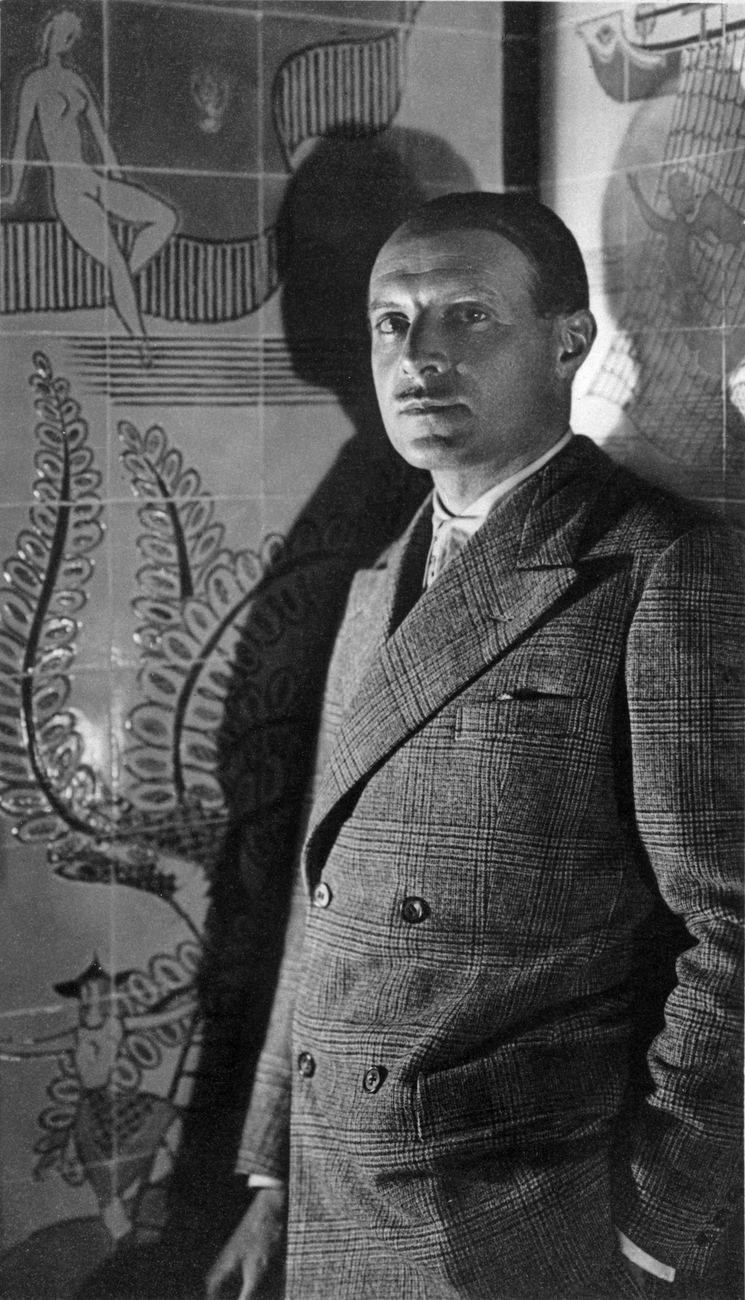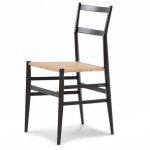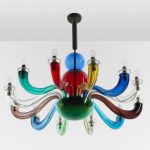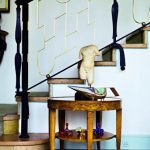By Patrizia Rossato Mari
Posted in Architettura, Design, Eventi, Lifestyle, Linea, Personaggi, Way of life | Tags : AngeVolant, architettura, arredod'interni, casaallitaliana, decor, GioPonti, immaginazione, individualismo, LeCorbusier, maestri, Moderno, Museedesartsdecoratifs, Parigi
Parigi e la Francia rendono omaggio con un’ampia retrospettiva a uno dei Maestri dell’Architettura italiana del Novecento, outsider rispetto a tutte le correnti e poco incline a piegarsi ai canoni modernisti e razionalisti imperanti sin dal primo dopoguerra. Gio Ponti si considera infatti un artista totale, fedele a un’estetica che declina il bello in tutte le forme, anche quelle poco auliche del vivere quotidiano e dell’abitare, senza cioè soluzione di continuità tra architettura, arredo d’interni e decor. Proprio a un francese, Monsieur Christofle, inventore della lega d’argento che da lui prende il nome, Ponti deve la commessa della sua prima villa, da Ponti stesso denominata l”Ange Volant’, emblema di quella leggerezza ed evanescenza, rese possibili dall’uso dell’acciaio, del vetro, dei cementi, delle ceramiche e delle plastiche, che il Moderno secondo Ponti vuole e deve incarnare. Non lontana dalla più celebre Villa Stein, firmata anch’essa da Le Corbusier negli anni Venti, l”Ange Volant’ ne rappresenta quasi l’antitesi definendo un modello di ‘casa all’italiana’, bella, semplice, non pura e concettuale ‘machine a’ habiter’, quale l’Avanguardia con il suo focus su essenzialità e funzionalità la teorizzava, bensì uno spazio pensato anche per accogliere suppellettili e opere d’arte. Il tema dell’angelo rappresenta anche il pretesto dell’ultima grande opera, la concattedrale di Taranto, la cui facciata traforata (un nido per angeli) è stata usata nella mostra in corso a Parigi come scenografica grata d’ingresso al denso percorso espositivo che si snoda nelle due ali attorno alla navata principale del Musée des Arts Décoratifs, in Rue de Rivoli.
Unico architetto italiano veramente internazionale, in anni di schieramenti e scuole legate ai contesti nazionali, egli seppe tradurre la ricchezza e versatilità del genio italiano, mito incrinato dagli anni bellici, in un ‘brand’ di lifestyle a 360 gradi. Alieno alle omologazioni, insensibile alle istanze militanti-ideologico-critiche della Modernità, fu piuttosto promotore di un nomadismo intellettuale e di un disimpegno politico favorevole all’individualismo dell’immaginazione. By PM —————-
Paris and France pay homage with a broad retrospective to one of the 20th century masters of Italian architecture, that was outside the mainstream and not inclined to bow to the modernist and rationalist canons that have prevailed since the first post-war period. Gio Ponti considers himself a total artist, faithful to an aesthetics that declines beauty in all forms, even those not very courtly of everyday life and living, without the solution of continuity between architecture, interior design and decor. Just to a Frenchman, Monsieur Christofle, inventor of the silver alloy that takes its name from him, Ponti owes the commission of his first villa, from Ponti himself called the ‘Ange Volant’, emblem of that lightness and evanescence, made possible from the use of steel, glass, cements, ceramics and plastics, which the Modern Ponti wants to embody. Not far from the most famous Villa Stein, also signed by Le Corbusier in the 1920s, the ‘Ange Volant’ represents almost the antithesis defining a model of ‘Italian home’, beautiful, simple, not pure and conceptual ‘machine a’ habiter ‘, as the Avanguardia with its focus on essentiality and functionality theorized, but a space designed to accommodate furnishings and works of art. The theme of the angel also represents the pretext of the last great work, the concattedrale of Taranto, whose perforated facade (a nest for angels) was used in the exhibition underway in Paris as a spectacular entrance grille to the dense exhibition path that winds through the two wings around the main nave of the Musée des Arts Décoratifs, in Rue de Rivoli.
The only truly international Italian architect, in years of alignments and schools linked to national contexts, he was able to translate the richness and versatility of Italian genius, myth cracked by the war years, into a 360 degree lifestyle brand. Alien to homologations, insensitive to the militant-ideological-critical demands of Modernity, he was rather a promoter of an intellectual nomadism and a political disengagement favorable to the individualism of the imagination.
- comfort e leggerezza dei nuovi materiali
- la famosa ‘Superleggera’
- lampadario Venini disegnato da Ponti
- particolare degli arredi della ‘Ange Volant’ tutti disegnati da Ponti
- Gio e Giulia Ponti









Comments are closed.